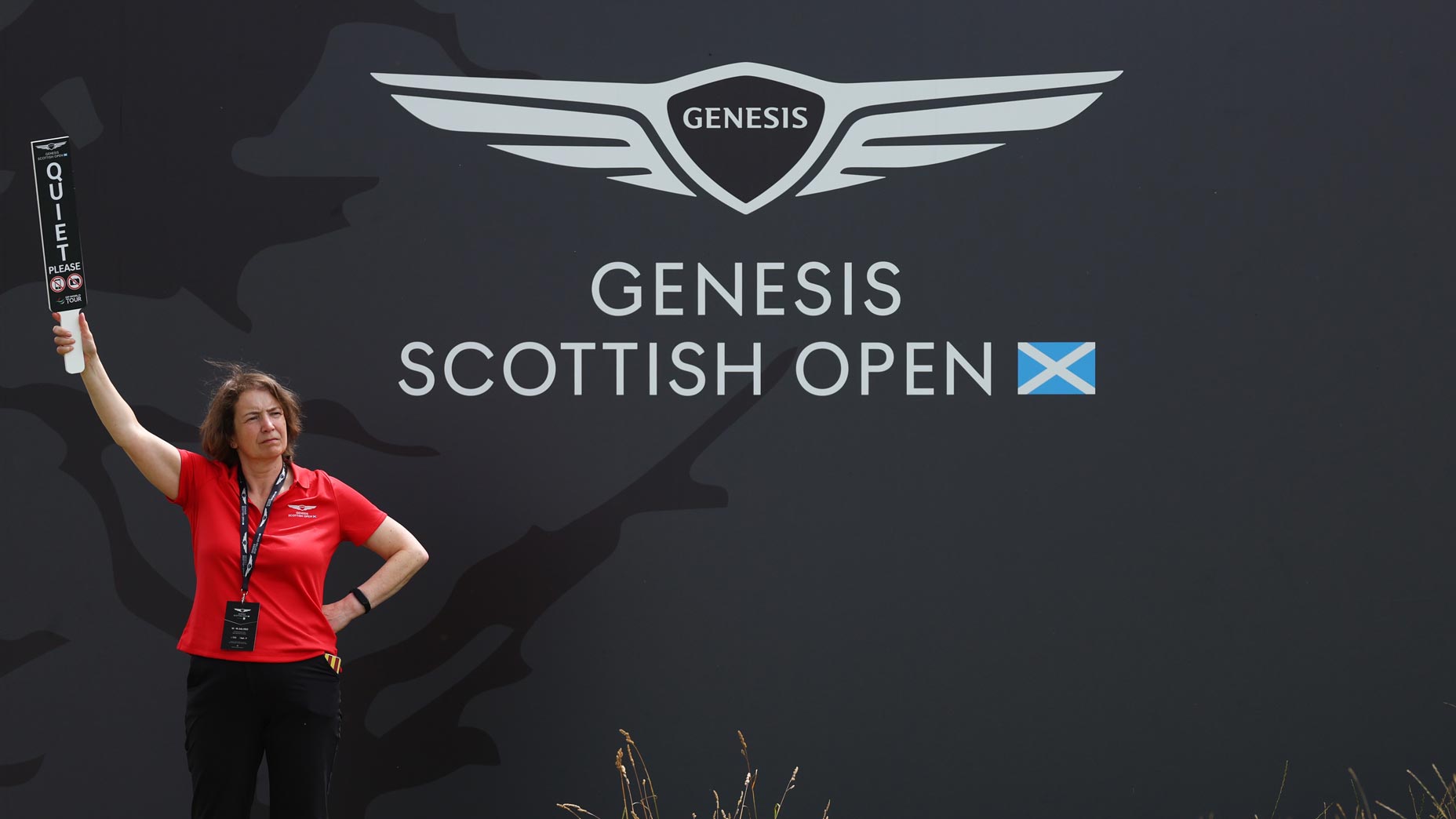SOUTHAMPTON, N.Y. — Calum Hill, a sectional qualifier from Kirckaldy, Scotland, by way of Western New Mexico University, arrived on the tee at the short par-3 11th hole at Shinnecock Hills with some bounce in his step Thursday afternoon. He was one-over-par in the blustery first round of the 118th U.S. Open, which had him within sniffing distance of the early leaders.
After deliberating with his caddie, who stared hard at his yardage book and twice tossed grass in the air to help gauge the steady left-to-right gusts, Hill settled in over his ball, peered up at the flagstick fluttering 157 or so yards up the hill, and struck a solid ball at the front-left portion of the green. From Hill’s vantage point, the semi-blind shot looked good, and it was good — just not good enough, because this maddening little hole doesn’t suffer good, it demands perfection. Hill’s ball caught the false front and trundled back off the green, coming to rest against the rough that lines the quartet of deep bunkers around the green.
Hill turned to the modest crowd lining the right side of the tee box and exhaled dramatically.
“This is such a stressful hole,” he said.
Indeed, in stressful conditions Thursday in the game’s most stressful tournament, a case could be made that the tee shot at the 11th was the most stressful shot of the day. Give a 15-handicapper a bucket of range balls from this tee — with the same 15-20 mph crosswinds the players battled in the first round — and he or she might not stop a single shot on the putting surface. Three-quarters of the hacker’s shots would be batted down by the wind and into one of the bunkers in front of the green, a handful would come in low and hot and run through the green into a collection area that leaves a petrifying clip-it-clean-or-else pitch, while the remaining swings would result in a motley collection of nervy tops, chunks and snap-hooks.
“I actually hit a really good tee shot on 11, landed it perfect,” said Scott Piercy who made three birdies on Thursday on his way to a one-under 69 and a share of the first-round lead. “But when it landed, it just went sideways right off the green.”
Alas, sometimes even perfect isn’t good enough at 11.
Jordan Spieth was far from perfect Thursday, posting an alarming 78. Six of those strokes came at the 11th where he blocked his tee shot into the far-right bunker, then committed the cardinal sin of running his bunker blast over the back edge of the green.
“Are you kidding me, dude?” he barked.
His next shot from the collection area took three or four bounces up the slope, paused for a beat on the back edge of the green, then rolled back from whence Spieth came, leaving the fiery Texan more incredulous still. 
Is the 11th fair? Supremely. Could it become unfair, just as the par-3 7th notoriously did at the 2004 U.S. Open here? Undoubtedly. And don’t think the blue coats don’t know it. With oodles of sunshine in the forecast for the next three days, the putting surfaces will bake like cookies, limiting the number of hole locations at the USGA’s disposal, especially on this devilish green.
Speaking of 11 earlier in the week, USGA chief Mike Davis said, “That hole generally only becomes a problem if you get hard winds out of the west-northwest and if you use a front hole location.”
Otherwise, Davis said, it’s a gem.
“One of the truly greatest par 3s in golf,” he said.
After Hill had played his tee shot at 11, one of his two playing partners, Mickey DeMorat, stepped in and hit a beautiful ball of his own, a high draw that fought the wind and landed safely in the middle of the green. (He would go on to make one of the just eight birdies recorded on 11 in the first round.) Then it was Tyler Strafaci’s turn. The young amateur from Georgia Tech drilled his tee shot on the same line as DeMorat’s. Assuming his ball was safely aboard, he bent over and plucked his tee from the ground. When he looked up, he saw that his ball had suffered the same fate as Hill’s, rolling back off the green.
“Sh——t,” Strafaci said, drawing out the expletive.
Not the first time this hole has evoked foul language, and certainly not the last.






